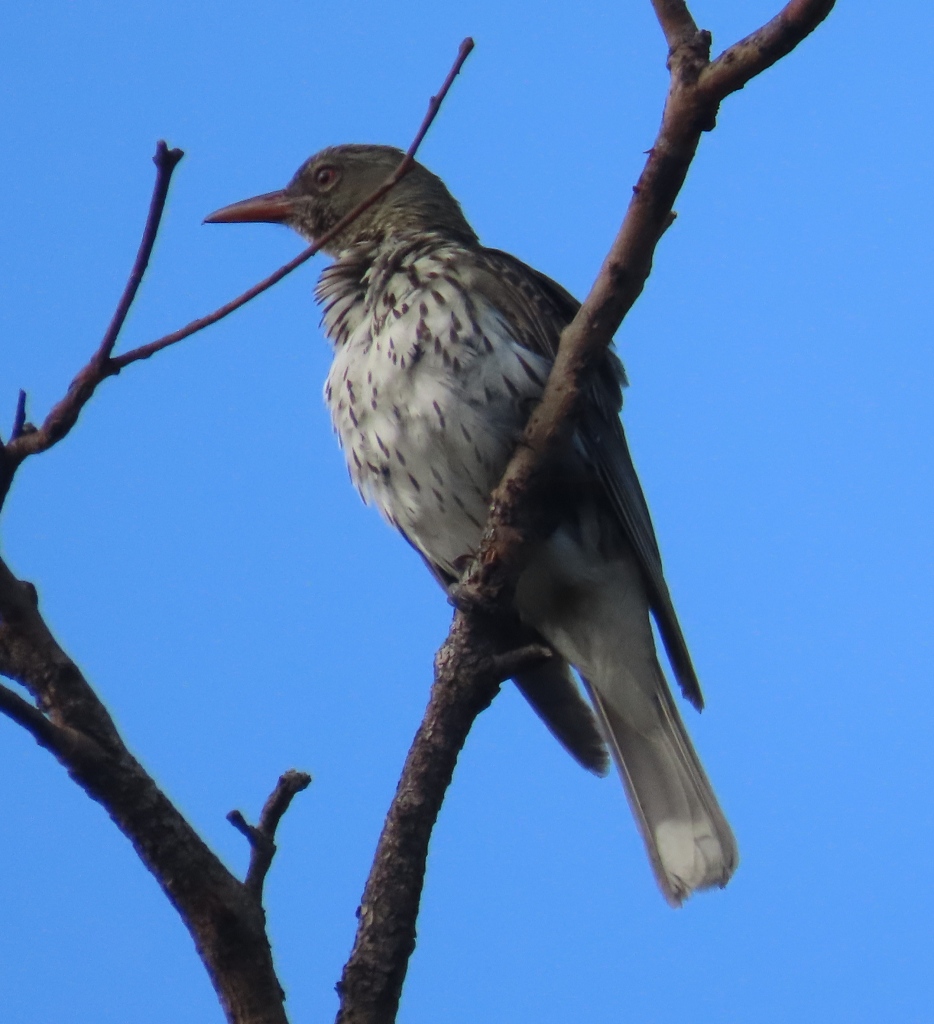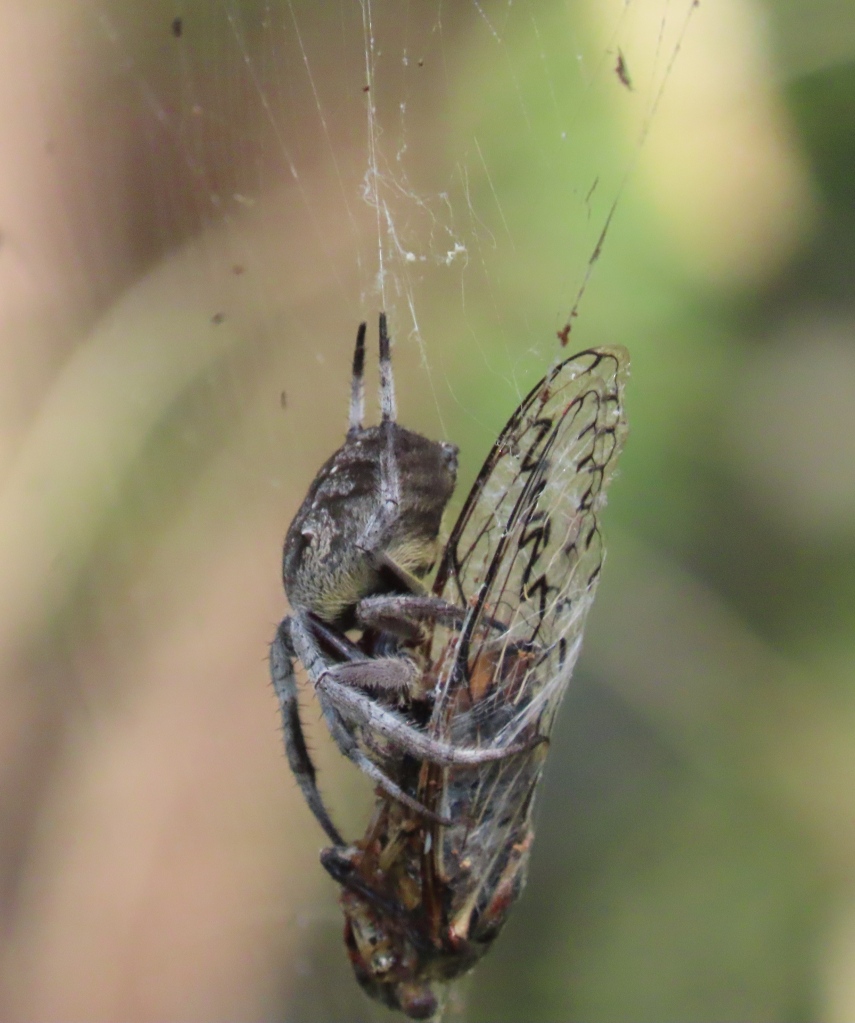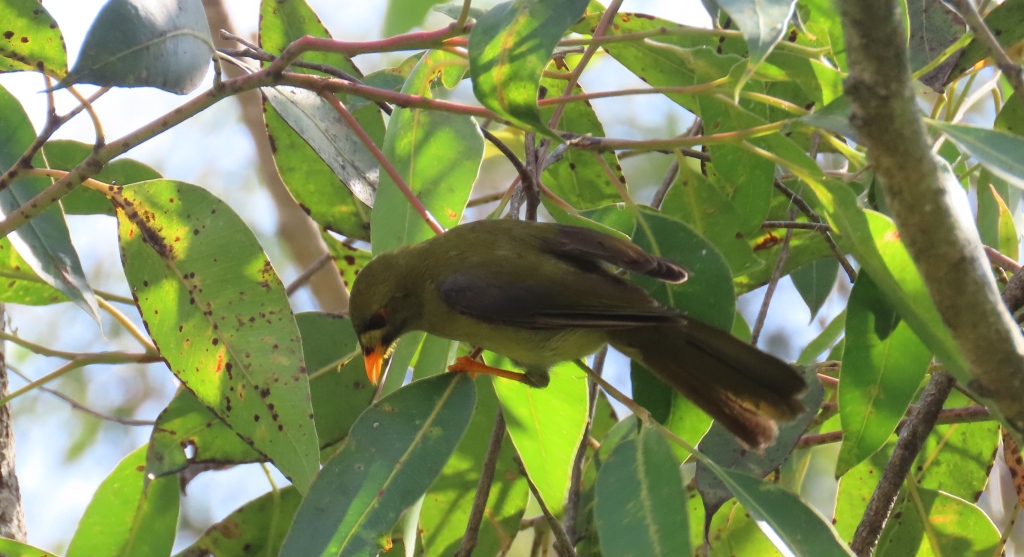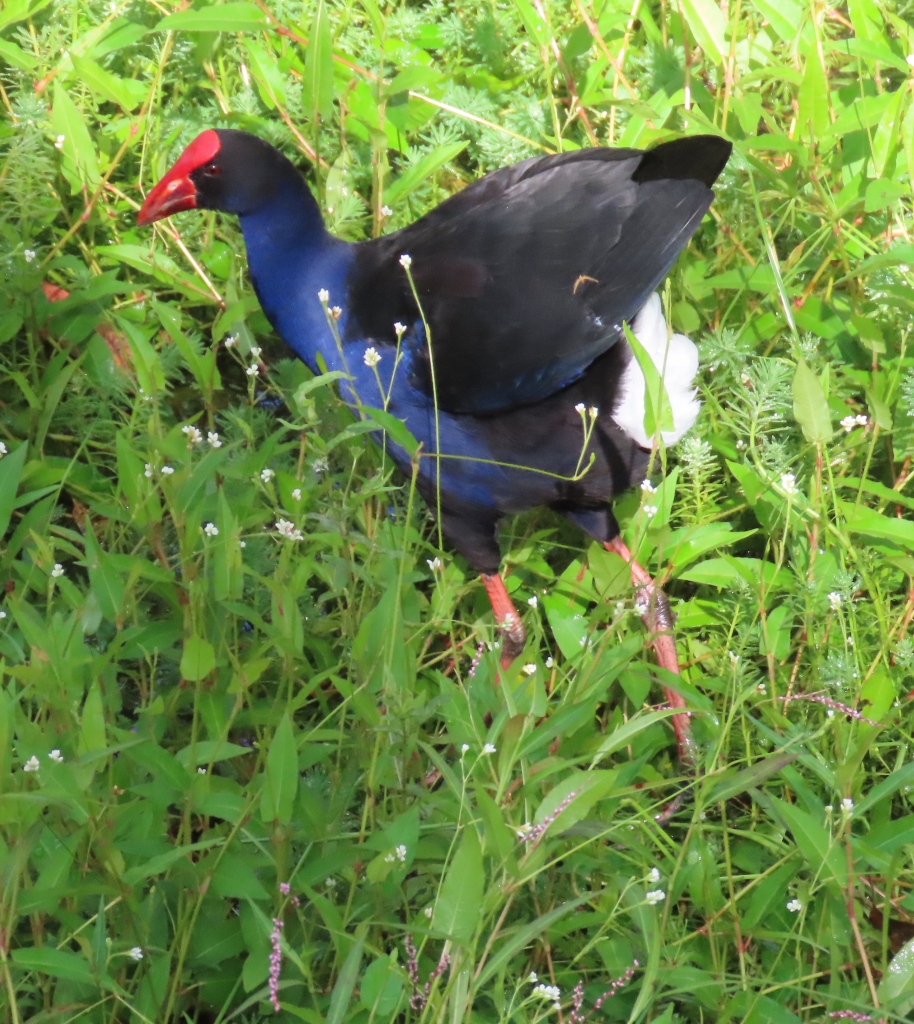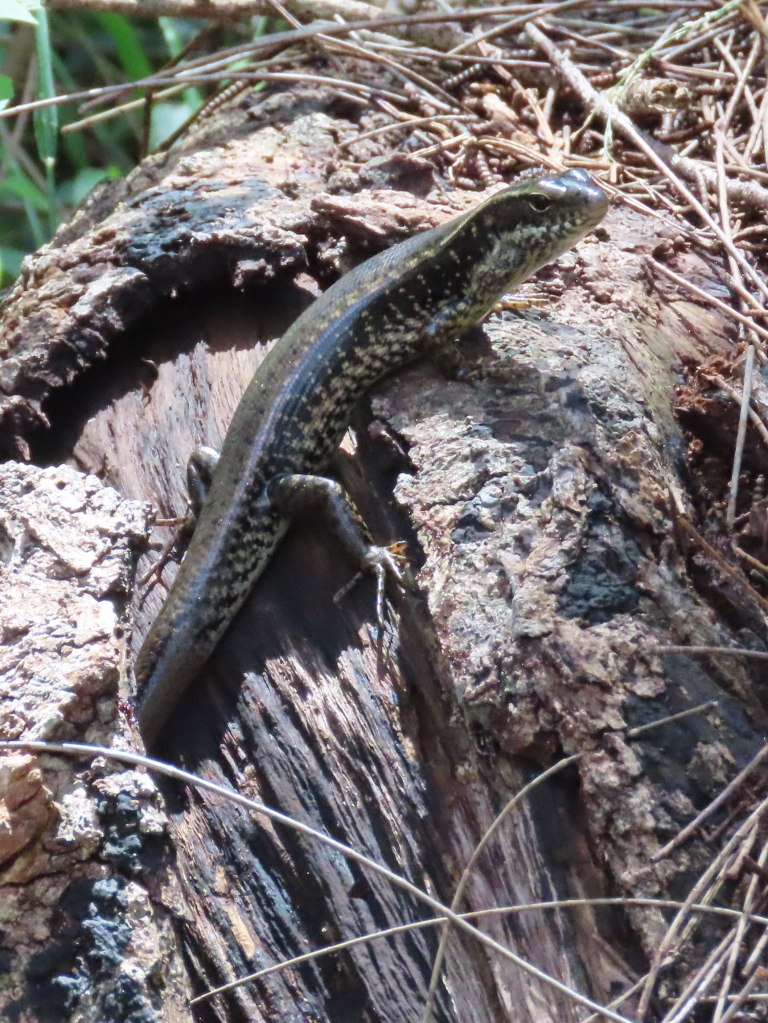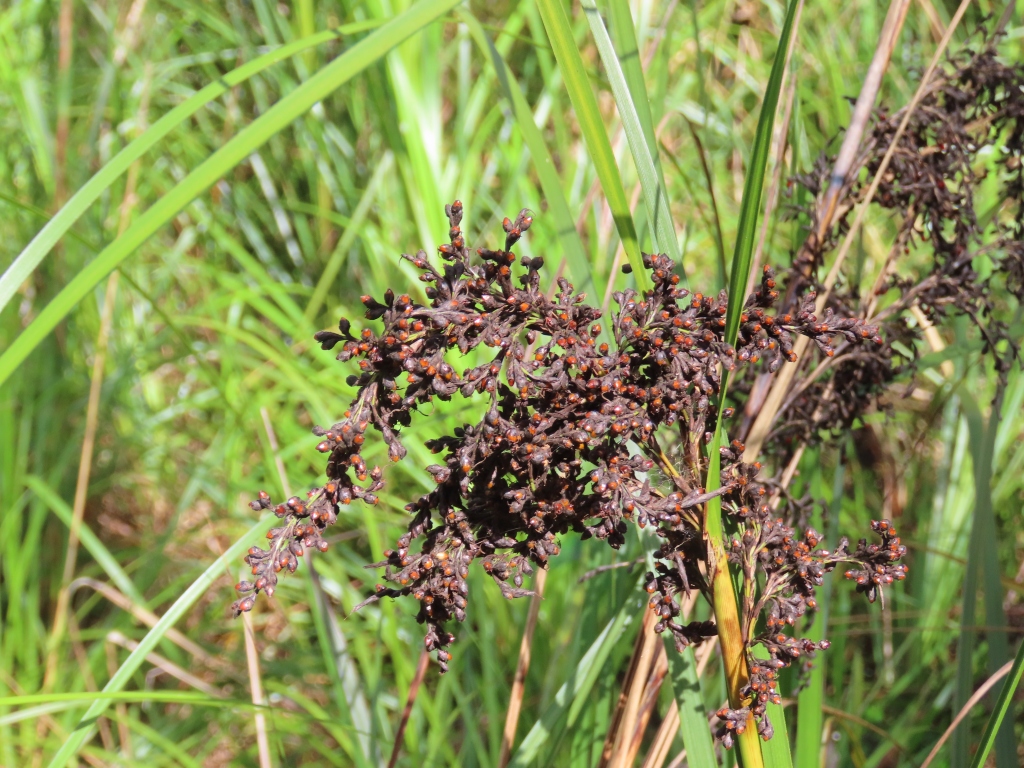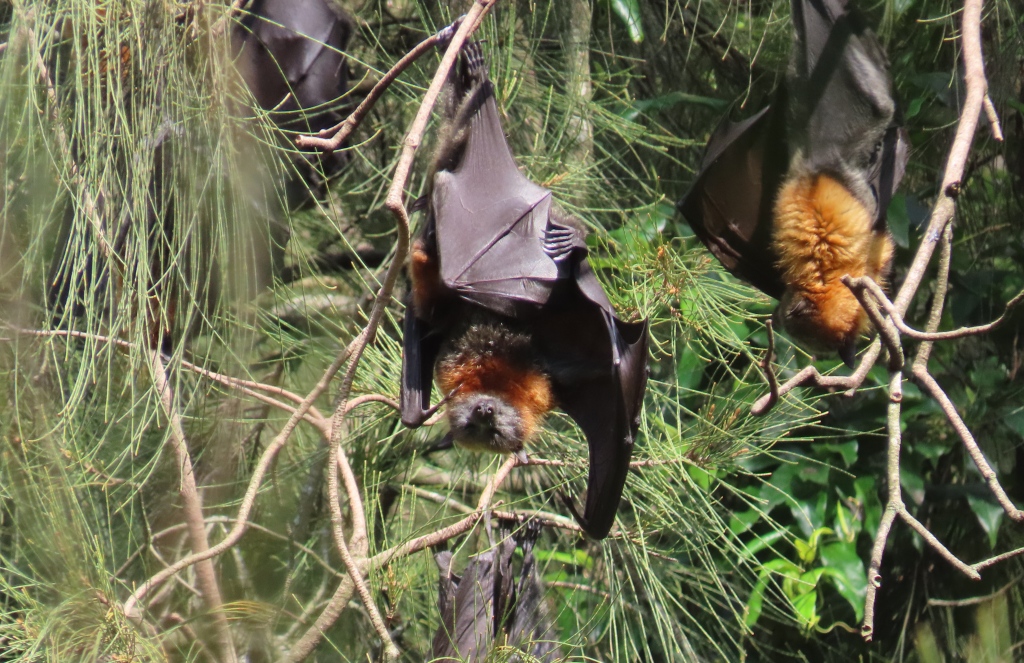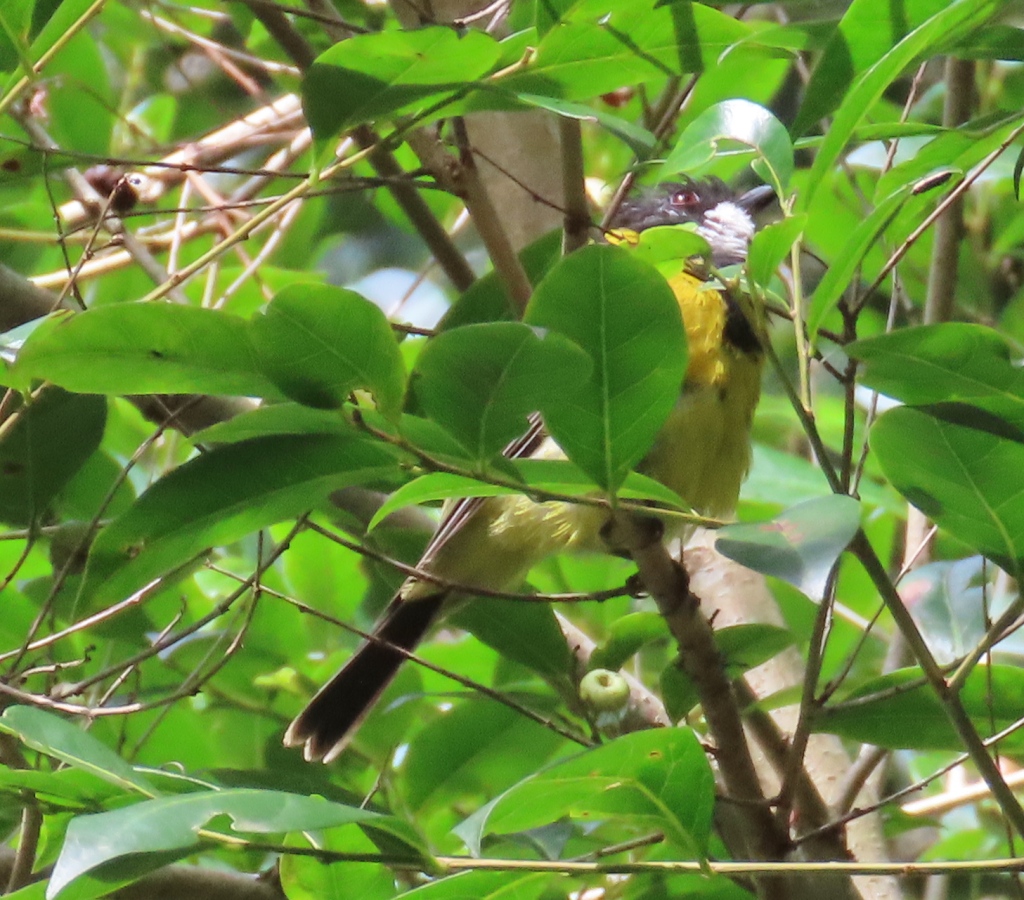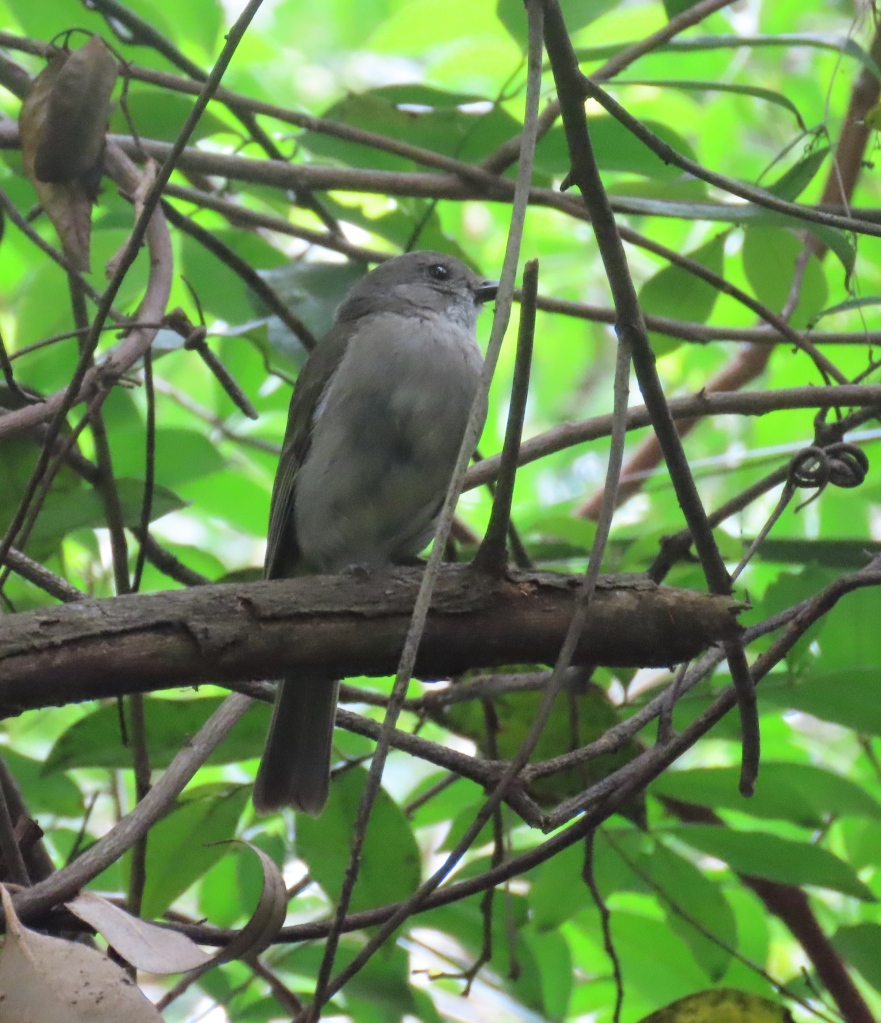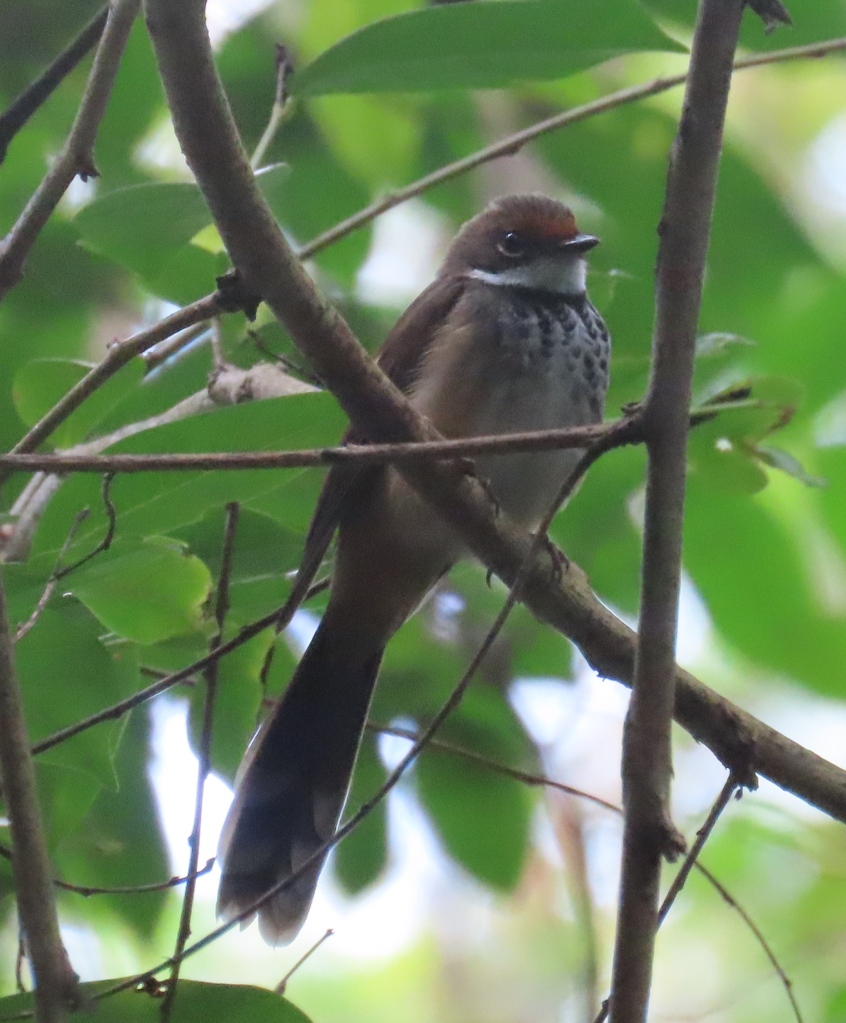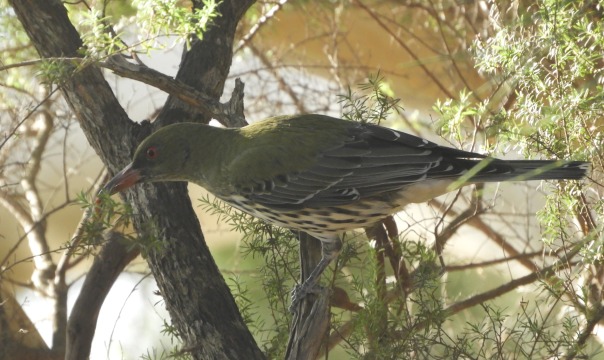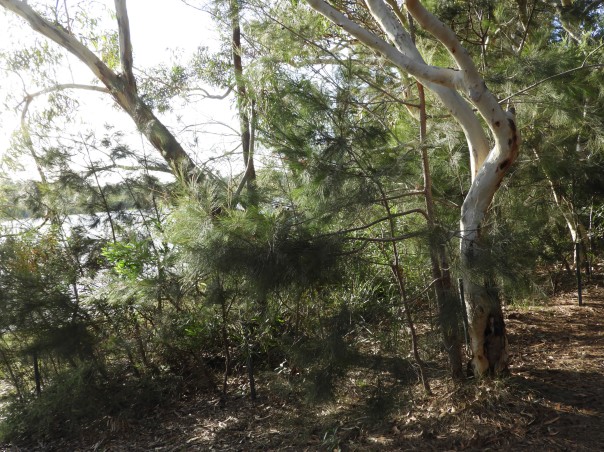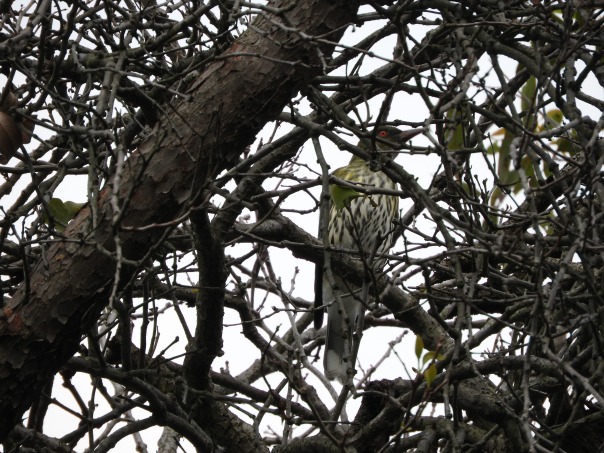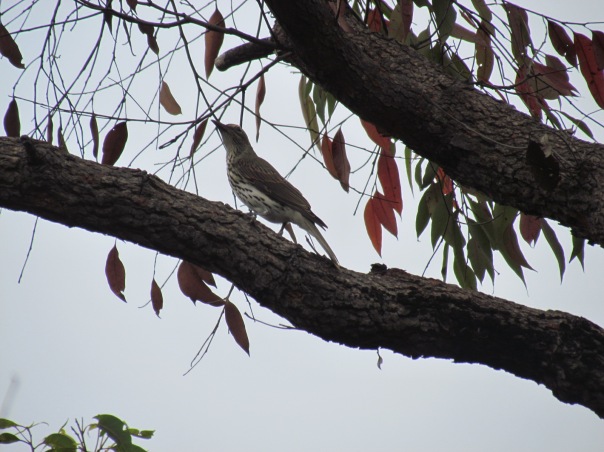Category Archives: Oriole
Colourful Oriole singing
The colours on this Olive-backed Oriole are gorgeous: bright red eyes, olive green neck and shoulders, white underbelly with black stripes. The bird was uttering its typical ringing call, interspersed with the sounds of other birds that it was mimicking. The music in the background is from some nearby picnickers.
The sound that first drew me to look for this bird was the call of a Black-faced Cuckoo-shrike. Instead, I found an Olive-backed Oriole mimicking the call! (I didn’t catch that particular sound in the video, alas.)
The bird was on a Casuarina tree, looking for insects among the seed pods. Here’s a still photo:
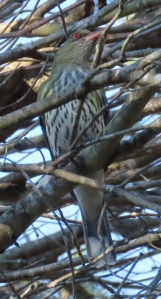
Common name: Olive-backed Oriole
Scientific name: Oriolus sagittatus
Approximate length: 25-28 cm
Date spotted: 25 March 2024 (summer)
Location: Manly Dam Park, New South Wales, Australia: 33°46’52.3″S 151°15’07.9″E
Oriole singing and mimicking other birds
A little Olive-backed Oriole had me intrigued for a while. I couldn’t see the bird, but I could hear a mixture of lyrical calls that seemed to come from a variety of birds. Eventually I tracked down the singer.

This looks like a young male bird. It has the dark head of a male, but its eyes are brown rather than red. It was lively and curious, hopping from branch to branch and examining its surrounds with evident interest. Or perhaps it was hungry and looking for food!
In this video, the oriole starts with a good preening session then launches into song. You can’t see the bird very well but you can hear its song:
Common name: Olive-backed Oriole
Scientific name: Oriolus sagittatus
Approximate length: 25-28 cm
Date spotted: 10 November 2020 (spring)
Location: Manly Dam Park, New South Wales, Australia: 33°46’52.3″S 151°15’07.9″E
Olive-backed Oriole looking a bit fierce
Olive-backed Orioles are lovely, with their smooth olive-green backs and mottled chests. I caught this one facing directly into the camera, and noticed how fierce those eyes look.
The fierceness fits the bill, if you’re a worm or some other prey for this bird. The oriole was bashing a worm around, softening it up before swallowing it, just before I took the above picture.
The next picture shows the bird with the worm in its beak. But, as is so often the case with bird photography, a branch got in the way!
Not fierce, just inquisitive:
Common name: Olive-backed Oriole
Scientific name: Oriolus sagittatus
Approximate length: 25-28 cm
Date spotted: 18 April 2020 (autumn)
Location: Manly Dam National Park, New South Wales, Australia: 33°46’39.5″S 151°14’57.9″E
Here’s a picture of the bird’s surrounds. In the background is the water of Manly Dam:
Olive-backed Oriole chirruping and looking for bugs
It was the unusual chirruping that made me look up into the trees and see this Olive-backed Oriole. At first I thought it was a Wattle Bird, but the sound it made was unusual. So I snapped a few shots and took them home to examine them on the big screen.
In the video, you can hear the sound the bird makes:
This is the first view I had of the bird. Very well camouflaged!
Here the bird looks with gimlet eye at a termite nest (out of shot above its head) no doubt hoping for some food to wander by.
This is a general picture of the trees in the area – the bird’s habitat:
Common name: Olive-backed Oriole
Scientific name: Oriolus sagittatus
Approximate length: 25-28 cm
Date spotted: 8 April 2018 (Autumn)
Location: Manly Dam National Park, New South Wales, Australia: 33°46’25.6″S 151°14’56.8″E
Mystery bird at Manly Dam
This bird puzzles me. It’s about the size of a Red Wattlebird, and I’m thinking it’s some sort of Honeyeater, but I can’t find a match in my bird book. Perhaps it’s a juvenile.
Does anyone have any ideas what it is? I saw it today at Manly Dam Reserve near Sydney (on the map: 33°46’37.5″S 151°14’49.5″E).
Here’s the uncropped version of the same picture:
Update on 24 April 2017: Carol Probets identified the bird as a young Olive-backed Oriole, in a comment on this post.
Common name: Olive-backed Oriole
Scientific name: Oriolus sagittatus
Approximate length: 25-28 cm
Date spotted: 29 January 2017 (Summer)
Location: Manly Dam Reserve, New South Wales, Australia: 33°46’37.5″S 151°14’49.5″E


